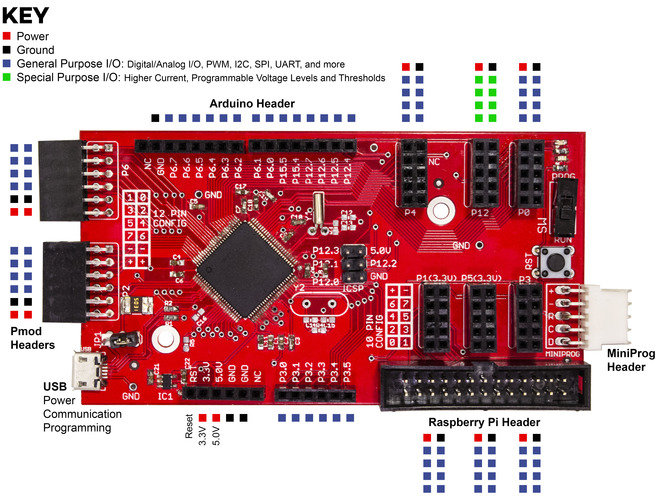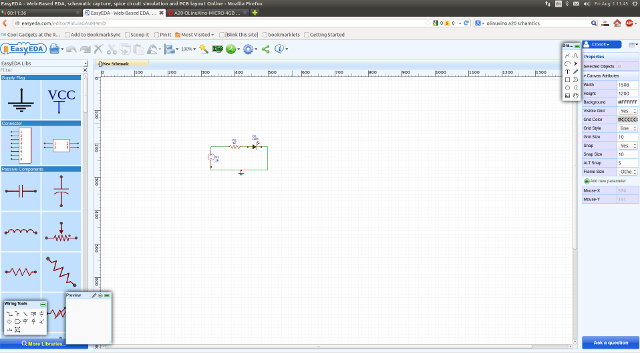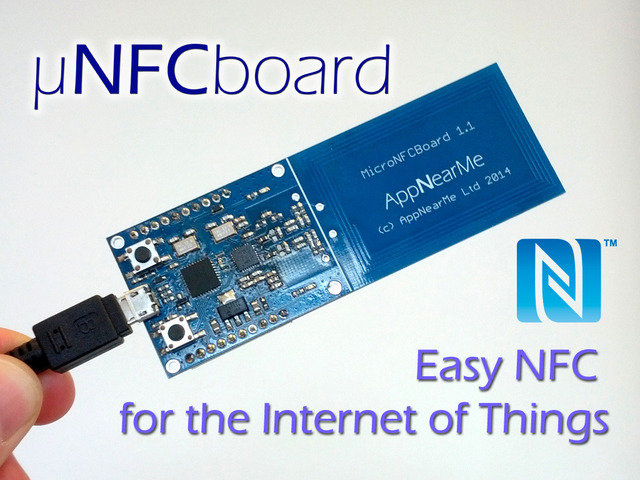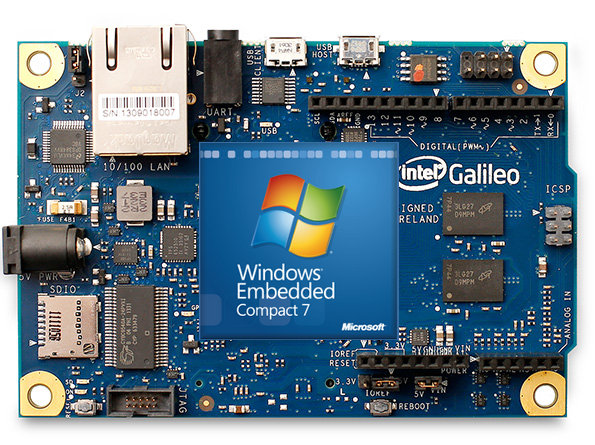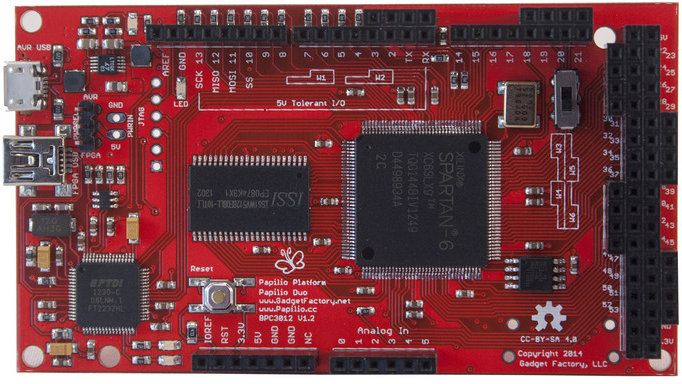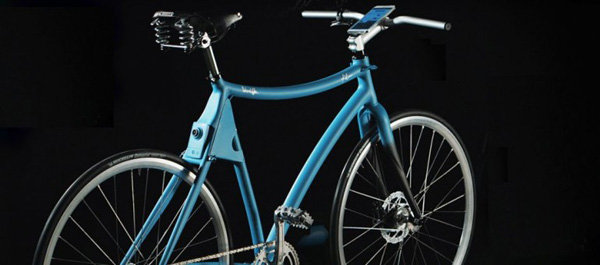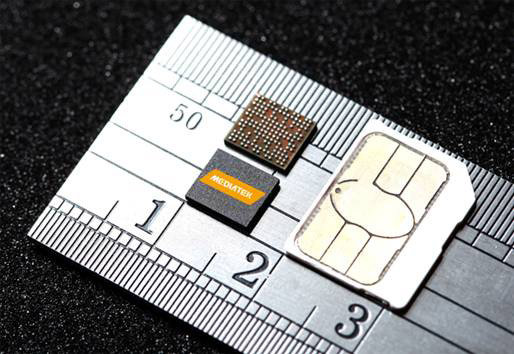Embedit Electronics, a startup founded by two recent graduates of Rensselaer Polytechnic Institute, USA, has designed a board powered by Cypress Semiconductor PSoC 5LP ARM Cortex M3 system-on-chip with programmable digital and analog I/Os. The board can interface with all Raspberry Pi models, Digilent Pmod peripheral modules, and supports Arduino shields. RPiSoC specifications: SoC – Cypress PSoC 5 with ARM Cortex M3 core at 67MHz , 256 KB Flash Program Memory, with user configurable write protection, and 64KB SRAM Expansions and I/Os: Arduino shield and ICSP compatible headers. 2x Digilent Pmod compatible headers 58 reconfigurable GPIO pins 26-pin ribbon cable connector for use with the Raspberry Pi 8 SIO (Special Input/Output) pins with higher current sink 5-pin MiniProg3 header for programming via MiniProg3 hardware. USB – 1x micro USB port for power, communication and programming. Misc – Reset push button, User accessible LED, Programming switch Power – 5V via micro […]
EasyEDA is a Web-based Schematics Capture, Simulation, and PCB Layout Tool
I recently watched a video showing AllWinner R&D, and I noticed although most (all?) software engineer run Ubuntu in the PC, the hardware engineers all relied on Windows based EDA tools for schematics capture and PCB Layout. There are already Linux-based tools such as Kicad, which appears to be good for new projects, but importing existing projects can be an issue. An alternative to operating system dependent EDA software suites are web-based tools. I’ve already tried Fritzing which allows to draw circuits on breadboard, convert these to schematics and PCB layouts, and order the PCBs. It looks pretty good for its purpose, but it’s limited to mostly simple designs, and AFAIK can’t be used to replace an EDA suite. That’s where EasyEDA comes into play. It’s a web-based tool where you can draw schematics, perform simulation, and create PCB layouts for your project, either keeping them private, or sharing them […]
Intel Announces Galileo Gen 2 Development Board Based on Quark SoC
As many of us are waiting for our Intel Galileo board promised by Microsoft, and right after the Raspberry Pi foundation announced the Raspberry Pi Model B+, Intel has introduced a new version of the Galileo board which they simply call Galileo Gen 2. The development board is still powered by Intel Quark single core SoC (Pentium class) and with the same key features as the original Galileo Board, but with some tweaks based on the feedback from the community. Intel Galileo Gen 2 specifications (Changes in Bold): SoC- Intel Quark SoC X1000 single core, single-thread application processor @ 400 MHz, with 12KB embedded SRAM System Memory – 256MB DDR3, 5 Storage – 8MB NOR fklash, 8KB EEPROM, and micro SD card slot (up to 32GB) Connectivity – 10/100M Ethernet USB – 1x USB 2.0 host port, 1x micro USB 2.0 device port used for programming Debugging / Programming 10-pin […]
$70 MicroNFCBoard Brings NFC Connectivity to Any Board or Device (Crowdfunding)
AppNearMe MicroNFCBoard is a development platform for Near Field Communication (NFC) comprised of an NFC transceiver, an NXP MCU, and all software stack and tools you need for development. This board also exposes various I/Os that allows you to connect to external hardware or devices, and it can be used with an Arduino, Raspberry Pi, mbed or PC/Mac. Let’s go through the board specifications first: MCU – NXP LPC11U34FHN33/421 Cortex M0 MCU @ 48MHz, with 10KB RAM, 48KB FLASH, 4KB EEPROM NFC Transceiver – NXP PN512. Reader/Writer and card operation modes supporting ISO14443A/Mifare and FeliCa schemes. NFCIP-1 mode Splittable antenna USB – 1x micro USB port for power and programming I/O – 20x through holes with access to serial (UART), I2C, SPI, 4x ADC inputs, IRQ, Boot and Reset, and power pins. (2x pin header that you can solder are provided) Misc – Reset and bootloader enable push-buttons, 2x LEDs. […]
Microsoft is Giving Away Intel Galileo Arduino Compatible Boards to Developers
Microsoft has already launched several initiatives to reach the maker movement and app developers with .NET Gadgeteer supported by platform like Bambino 200, as well as Intel Shark Cove development board for Windows development. The company has now launched a website called windowsondevices.com where they currently have a signup page for developers to send a kit based on Intel Galileo, an Arduino compatible board powered by Intel Quark processor. There’s currently very little information on the software and documentation part of the development kit, but there are links to Visual Studio Express, Windows Embedded’s Internet of Things page, and a link to Maker Faire, so it gives what the kit will be for. Apparently they’ll send the kit to selected candidate whether “you are an experienced Windows developer looking to jump into the Internet of Things or you are new to Windows development and want to build the next big […]
$88 Papilio DUO Arduino Compatible Board with a Xilinx FPGA Let You to Draw your Own Circuits
In a concept similar to Arduissimo, Papilio DUO is an Arduino compatible board with a Xilinx Spartan-6 FPGA, but it adds a real Atmel AVR MCU, and instead of going the Indiegogo route, the project has launched on Kickstarter, and already reached its $30,000 funding target with 13 days to go. Instead of writing VHDL code, a drag and drop graphical tool called DesignLab will help you build your own circuits more easily. Let’s go through the hardware specifications first: FPGA – Xilinx Spartan 6 LX9 FPGA System Memory – 512KB or 2MB ISSI IS61WV5128 SRAM Storage – 64Mbit Macronix MX25L6445 SPI Flash MCU – Atmel AVR ATmega32U4 (Same as Arduino Leonardo) USB – 1x micro USB port connected to the Atmel MCU, 1x mini USB port connect to the FPGA I/Os 54 I/O pins available via Arduino Mega headers 0-16 Digital Pins connected to FPGA and ATmega32U4 JTAG Power – High […]
Meet Samsung Smart Bike fitted with an Arduino, a Rear Camera, Lasers and More
Samsung Maestros Academy has introduced a Smart Bike prototype integrating various “smart” components within its aluminum frame, such as an Arduino board connected to a Wi-Fi + Bluetooth module, a battery, four laser projectors, and a digital camera controlled by a Samsung smartphone. The camera is fitted at the back just under the seat, and allows the riders to have a real-time rear view image on the phone. The four lasers are used to create a virtual bike lane in case a real one is missing, and remind other drivers to keep a safe distance to your bicycle. The bike can also detect ambient conditions using the smartphone sensors, and modify its behavior. For example, it can switch on or off the laser beams depending on the brightness sensor data from the smartphone. Each bike also tracks daily routes of the riders using GPS, and can let local authorities know where bicycle traffic is most intense, and […]
MediaTek Unveils LinkIt Platform with MT2502 Aster SoC for Wearables and IoT Applications
After Ineda Systems Dhanush SoC and SHASTRA Devkit, here’s another Wearable SoC and development kit for today with Mediatek announcement of their LinkIt platform providing both hardware and software to develop wearables and IoT applications using their Aster SoC for wearables. Key features of LinkIt platform listed on Mediatek Labs: MediaTek Aster (MT2502) measures only 5.4 x 6.2mm and is specifically designed for wearable devices Developer platform supported by reference designs that enable creation of various form factors, functionalities and internet connected services Synergies between microprocessor unit and communication modules, facilitating development and saving time in new device creation Modularity in software architecture provides developers with high degree of flexibility Supports over-the-air (OTA) updates for apps, algorithms and drivers Plug-in software development kit (SDK) for Arduino and VisualStudio; planned (Q4 2014) support for Eclipse Hardware Development Kit (HDK) based on LinkIt board by third party No details have been provided for […]


